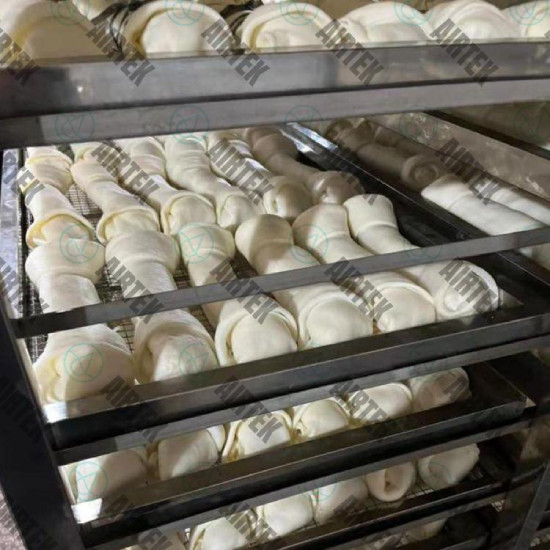Food safety represents the cornerstone of successful pet food production, where even minor contamination can devastate brand reputation and endanger beloved pets. A pet food dryer serves as the critical barrier between raw ingredients and safe, shelf-stable products that pet owners can trust.
The drying process fundamentally transforms vulnerable wet ingredients into protected, long-lasting nutrition through precise moisture control. When manufacturers invest in quality pet food dryer technology, they create products that resist spoilage, maintain nutritional value, and deliver consistent safety standards that regulatory bodies demand.
The Science Behind Moisture Control and Microbial Prevention
- Understanding Water Activity Levels: Microorganisms require specific moisture conditions to survive and multiply, making water activity the primary factor in food preservation. Professional drying equipment reduces water activity below critical thresholds where harmful bacteria, yeasts, and moulds cannot establish colonies or produce dangerous toxins.
- Temperature and Time Relationships: Effective drying combines controlled heat application with precise timing to eliminate moisture without damaging essential nutrients. The process creates an inhospitable environment for pathogens that commonly plague pet food production, including Salmonella, E. coli, and various fungal species that cause spoilage.
- Cellular Structure Preservation: Modern drying technology maintains the structural integrity of proteins, vitamins, and minerals during moisture removal. This preservation ensures that dried pet foods retain their nutritional density and palatability, creating products that pets find appealing and owners consider valuable.
Critical Quality Parameters in Pet Food Drying
- Moisture Content Standards: Industry regulations typically require finished pet foods to contain less than 12% moisture for dry products, with some premium formulations targeting even lower levels. Achieving these standards requires sophisticated equipment capable of uniform heat distribution and precise environmental control throughout the drying chamber.
- Temperature Distribution Monitoring: Uneven heating creates dangerous hot spots and cold zones where moisture persists, providing breeding grounds for contamination. Professional drying systems incorporate multiple temperature sensors and automated controls that maintain consistent conditions across all product surfaces during processing cycles.
- Airflow Management Systems: Proper air circulation removes moisture-laden vapour whilst preventing cross-contamination between different product batches. Advanced systems feature filtered air intake, controlled exhaust systems, and internal circulation patterns that ensure complete moisture removal from dense product matrices.
Extended Shelf Life Through Controlled Processing
Shelf stability depends entirely on eliminating the conditions that support decomposition and spoilage organisms. Proper drying creates products that remain safe and nutritious for extended periods without refrigeration, reducing distribution costs and increasing market accessibility for manufacturers.
- Oxidation Prevention Strategies: Low-temperature drying processes minimise oxidative damage to fats and oils that cause rancidity and off-flavours. By carefully controlling heat exposure and oxygen levels during processing, manufacturers create products that maintain freshness and palatability throughout their intended shelf life.
- Packaging Compatibility Enhancement: Thoroughly dried products create optimal conditions for various packaging methods, including vacuum sealing, modified atmosphere packaging, and moisture barrier films. This compatibility allows manufacturers to select packaging solutions that further extend product life and maintain quality during storage.
Economic Benefits of Proper Drying Technology
- Waste Reduction Achievements: Effective moisture control dramatically reduces product losses from spoilage, mould growth, and bacterial contamination that plague inadequately processed foods. These reductions translate directly into improved profit margins and reduced disposal costs for manufacturers operating on tight production budgets.
- Production Efficiency Gains: Modern drying equipment processes larger batches with greater consistency than traditional methods, reducing labour costs and increasing throughput. Automated systems also minimise human handling, reducing contamination risks and improving overall product safety while streamlining production workflows.
- Regulatory Compliance Assurance: Consistent moisture control helps manufacturers meet stringent food safety regulations and pass inspection requirements that govern pet food production. This compliance protects against costly recalls, legal liability, and reputation damage that can destroy established brands virtually overnight.
Key Safety Features in Modern Drying Systems
- Multi-zone temperature control ensures uniform heating across all product areas
- Automated moisture monitoring provides real-time feedback on drying progress
- HACCP-compliant design supports food safety management systems
- Easy-clean surfaces reduce contamination risks between production runs
- Emergency shutdown systems protect products from overheating damage
Quality Assurance Through Advanced Monitoring
- Real-Time Data Collection: Contemporary drying systems capture continuous data on temperature, humidity, airflow, and processing time, creating detailed records that support quality assurance programmes. This documentation proves invaluable during regulatory inspections and helps identify process improvements that enhance product safety.
- Predictive Maintenance Capabilities: Smart monitoring systems detect equipment wear and performance degradation before failures occur, preventing contamination events and production disruptions. These capabilities protect product quality whilst reducing unexpected maintenance costs and production downtime that impact profitability.
Conclusion
Professional pet food drying technology represents an essential investment in product safety, quality, and commercial success. The controlled removal of moisture creates shelf-stable products that resist contamination, maintain nutritional value, and meet the exacting standards that pet owners demand. Manufacturers who prioritise proper drying processes position themselves for sustainable growth in an increasingly competitive marketplace. Contact qualified equipment specialists today to explore drying solutions that will protect your products and enhance your reputation.

